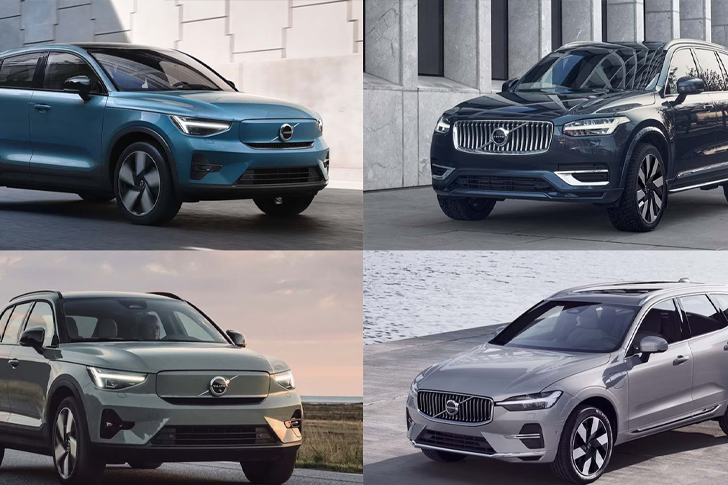Volvo Unveils Its Latest Series of Vehicles
Volvo, a name synonymous with safety and innovation in the automobile industry, has recently unveiled its latest series of vehicles. This new lineup underscores Volvo’s commitment to sustainability, safety, and technological sophistication. The introduction of these models comes at a time when the global automotive market is increasingly shifting towards electric and hybrid vehicles, striving to reduce carbon footprints and enhance energy efficiency.

Highlights of the New Volvo Series
The latest series from Volvo features a mix of fully electric and plug-in hybrid models, signaling the company’s drive towards an all-electric future by 2030. Each model in the new series is built with cutting-edge technology designed to improve both performance and environmental sustainability. Key features include enhanced battery technology, sophisticated driver assistance systems, and interiors made from recyclable materials.
Technological Innovations and Sustainability
One of the standout aspects of the new Volvo series is its advancements in electric vehicle (EV) technology. The cars are equipped with state-of-the-art lithium-ion batteries that offer longer ranges per charge compared to their predecessors. For instance, the new fully electric Volvo XC40 Recharge can now travel up to 400 kilometers on a single charge, a significant improvement from the previous 350 kilometers. Additionally, charging these batteries up to 80% can be achieved in roughly 40 minutes using a fast charger, catering to the needs of fast-paced lifestyles.
Advanced Safety Features
True to Volvo’s heritage, the latest vehicles are fortified with next-generation safety technologies. These include enhancements to the Pilot Assist system, which now integrates data from cloud-based sources and vehicle-to-vehicle communication to improve functionality in traffic. Moreover, new features such as the 360-degree camera enhance driver visibility, and the Advanced Driver Assistance Systems (ADAS) have been upgraded to provide better prediction and prevention of potential collisions.
Interior Design and Materials
Volvo’s commitment to sustainability is evident not just in its propulsion technology but also in its choice of materials. The interiors of the new series use recycled fabrics and bio-based materials, reducing reliance on plastics and leather. For example, the upholstery in the new models incorporates Re:Volvo, a fabric made from 100% recycled materials, including PET bottles and reclaimed ocean waste. Additionally, Volvo has optimized interior space, providing more room for passengers and cargo, reflecting the practical needs of modern drivers and families.
Empowering the Driver with High-tech Features
The Volvo series also includes several user-friendly technologies aimed at enhancing the driving experience. A new, intuitive infotainment system developed in collaboration with Google supports a range of applications and services, including Google Maps and Google Assistant, allowing for smoother and smarter interaction without distraction. Moreover, the integration of enhanced voice control features means that the majority of functions can be operated hands-free, prioritizing safety and convenience.
Market Reception and Future Outlook
Initial reactions to the new Volvo series have been overwhelmingly positive, reflecting the brand’s strong reputation and loyal customer base. The upgrades in range and recharge capabilities, in particular, have been highlighted as significant improvements that can help persuade more consumers to consider electric vehicles. Moreover, with Volvo’s pledge to become a fully electric car company by 2030, the ongoing developments and investments in EV technology are likely to capture a significant market share in the growing segment of eco-conscious consumers.
Challenges and Competitor Benchmarking
Despite the advancements, Volvo faces stiff competition from other automakers that are also aggressively pursuing electric vehicle technologies. Brands like Tesla, Volkswagen, and Ford are introducing models that feature comparable range and technology, often at competitive pricing. Volvo will need to continue its focus on innovation and possibly explore strategic pricing and marketing strategies to enhance its market position.
Conclusion
The latest vehicle series from Volvo marks a significant step towards the future of automotive technology with an unwavering focus on sustainability, safety, and technological advancements. As the global automotive landscape continues to evolve, Volvo’s commitment to these fundamental aspects will likely play a critical role in shaping the future of mobility. With their new series, Volvo not only upholds its legacy but also sets new benchmarks in the car industry.







Recent Comments